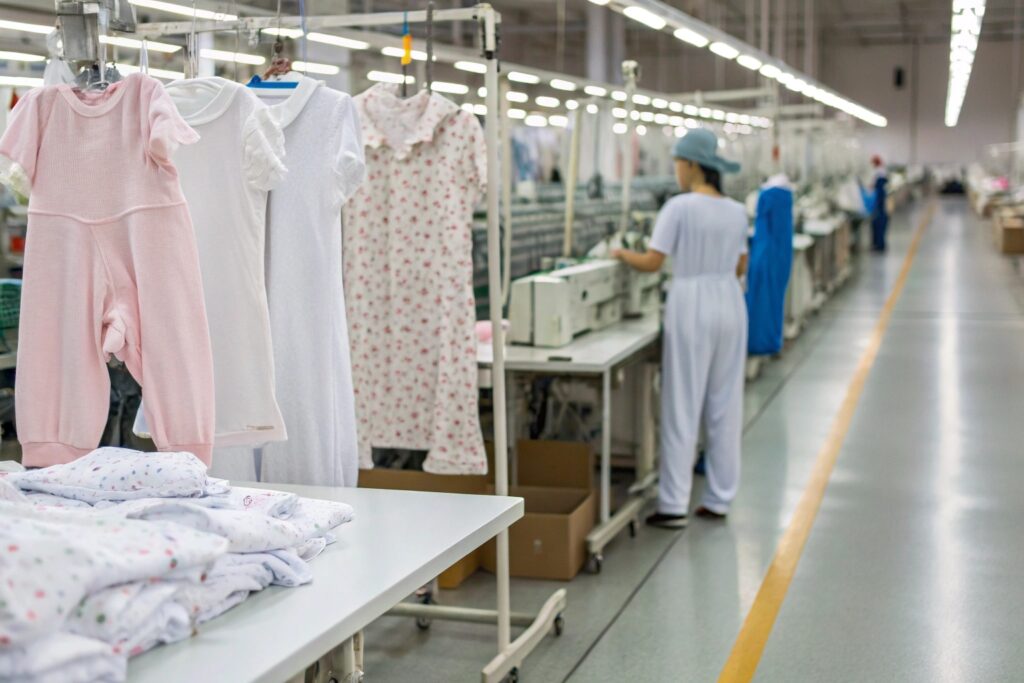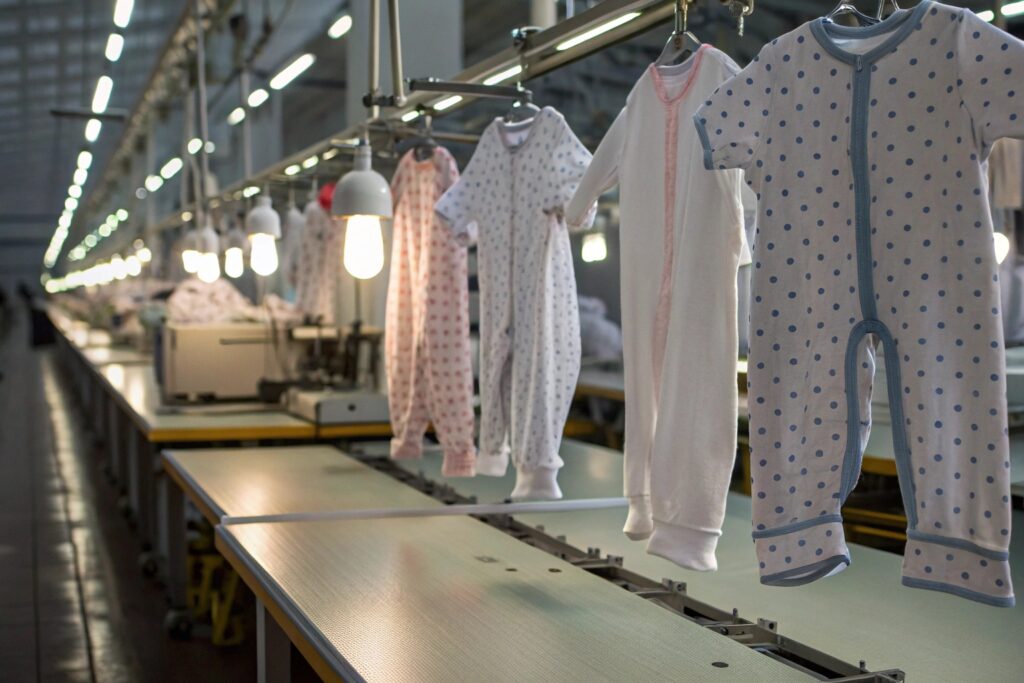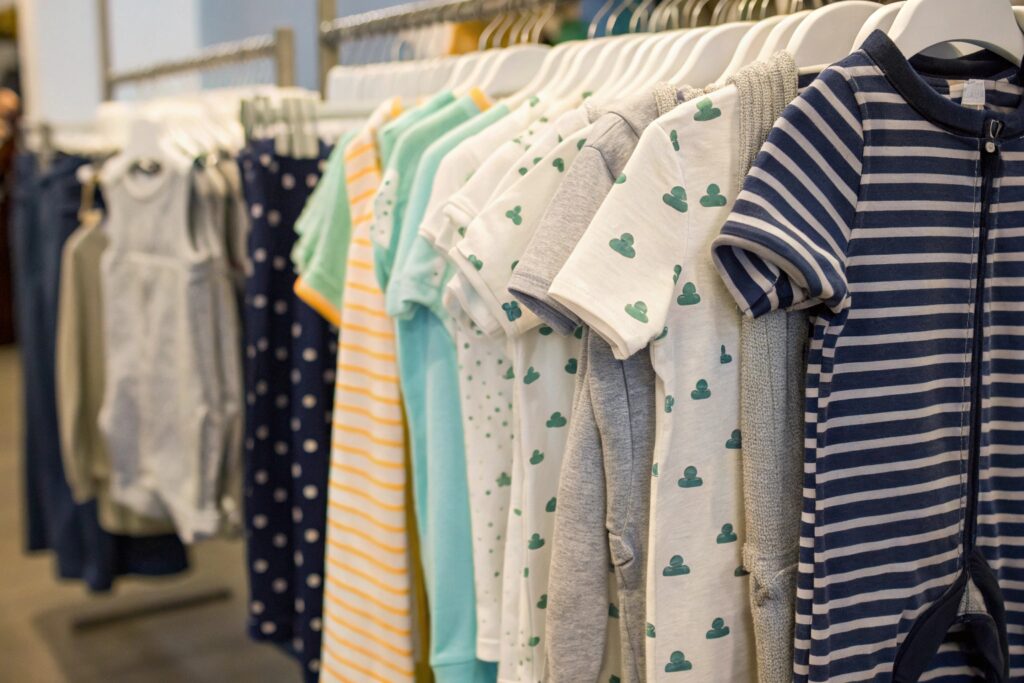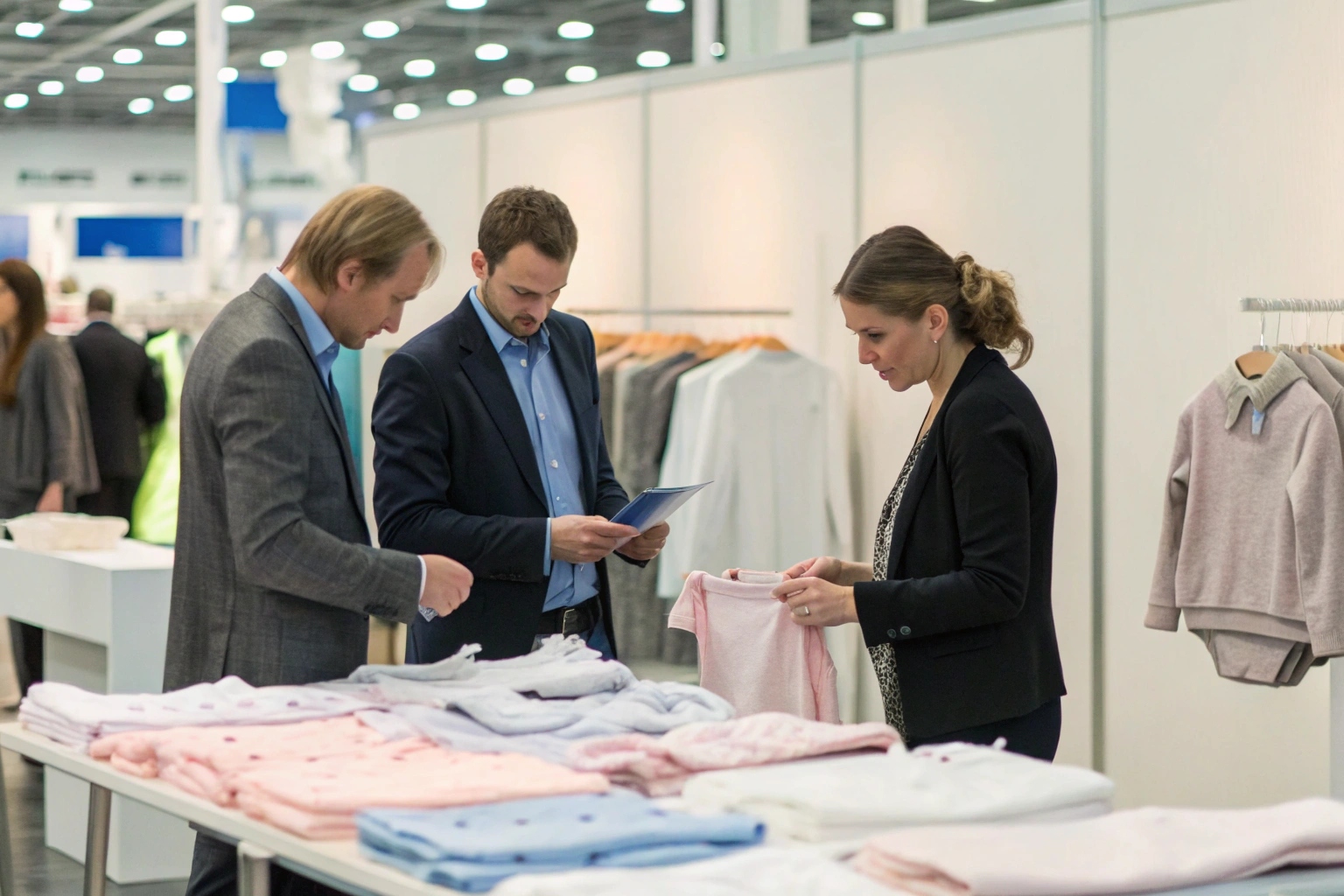Launching a baby clothing line is exciting but finding the right manufacturer can feel overwhelming. Many startups waste months and thousands of dollars working with unreliable factories that deliver poor quality or miss deadlines.
Startups can find reliable newborn clothing manufacturers through trade shows like Magic and Playtime, B2B platforms like Alibaba and Maker's Row, and industry referrals - but must always verify certifications and request samples before ordering. At Fumao Clothing, we specialize in helping startups with low MOQs from 50 pieces.
The newborn apparel market is worth $73.6 billion globally, but competition is fierce. Partnering with the right manufacturer from day one gives your brand the quality and reliability needed to succeed.
Where to Find Ethical Newborn Clothing Manufacturers?
After his first manufacturer used child labor, Ron now triple-checks every factory's ethical credentials. The consequences of getting this wrong can destroy a brand overnight.
The best places to find ethical manufacturers are: certified BSCI/Sedex factories (audited for labor standards), OEKO-TEX certified facilities (safe materials), and WRAP certified producers (ethical manufacturing). We maintain all three certifications at Fumao Clothing, with audit reports available to clients.

What Red Flags Indicate Unethical Manufacturing?
Startups should watch for:
- Refusal of Factory Visits: Ethical manufacturers welcome inspections
- Vague Answers About Working Conditions: We provide detailed worker welfare reports
- Prices Too Good to Be True: Often indicates corner-cutting on labor costs
- No Certifications: All legitimate factories have at least basic compliance docs
How to Verify Ethical Claims Remotely?
For startups that can't visit China, we recommend:
- Video Call Factory Tours: Live walkthroughs, not prerecorded
- Third-Party Verification: Services like QIMA conduct audits
- Worker Interviews: We arrange Zoom calls with staff
- Certification Validation: Check numbers with issuing bodies
How to Vet Baby Garment Factories for Quality?
Ron's first shipment of baby rompers had 32% defect rate because he skipped factory vetting. Newborn clothes require stricter quality control than adult apparel.
To properly vet factories: inspect their sample making process, review quality control procedures, verify fabric testing capabilities, and check past client references. Our facility has dedicated QC teams for newborn clothing, with triple inspection points at cutting, sewing, and finishing stages.

What Quality Standards Matter for Newborn Clothes?
Essential certifications and tests:
- Physical Safety: No loose buttons/choking hazards
- Chemical Safety: PASS OEKO-TEX Standard 100 Class I
- Flammability: Meet 16 CFR 1610 (US) or EN 1102 (EU)
- Colorfastness: 4+ rating after 20 washes
- Stitch Strength: Minimum 15N force resistance
How to Evaluate Sample Quality?
When assessing samples:
- Check Seam Allowance: Should be at least 0.6cm
- Test Stretch: Fabric should recover fully after stretching
- Inspect Labels: Must be irritation-free and securely attached
- Wash Test: 5+ washes with no pilling or shrinkage >3%
- Rub Test: Colors shouldn't transfer when wet
What Company Sells the Most Baby Clothes?
Understanding market leaders helps startups identify manufacturing trends and quality benchmarks.
Carter's dominates the market with 19.3% US share, producing over 500 million baby garments annually. Other major players include Gerber Childrenswear (12.1%), The Children's Place (8.7%), and Gap Baby (6.4%). All these brands manufacture partly in China, like our facility that produces for several licensed brands.

How Do Big Brands Keep Prices Low?
Mass-market strategies startups can adapt:
- Fabric Consolidation: Using 3-5 core fabrics across all styles
- Standardized Sizing: Reduces pattern-making costs
- Year-Round Basics: 70% of inventory non-seasonal
- Direct Factory Relationships: Like our DDP terms that eliminate middlemen
What Can Startups Learn From Market Leaders?
Key takeaways:
- Quality Consistency: Carter's maintains <2% defect rate
- Safety Focus: Gerber pioneered nickel-free snaps
- Efficient Packaging: Gap uses 30% less polybag material
- Inventory Turnover: Children's Place replaces stock every 8 weeks
How Big Is the Baby Clothing Industry?
Startups should understand the market potential and seasonal patterns before selecting a manufacturer.
The global baby clothing market reached $73.6 billion in 2023, with 4.2% annual growth. The US accounts for 31% ($22.8 billion), while China's domestic market grew fastest at 7.8%. Premium organic segments now represent 18% of sales, up from 12% in 2020.

What Are the Key Market Segments?
Breakdown by product type:
- Basic Apparel: 54% share (bodysuits, sleepers)
- Outerwear: 22% (jackets, sweaters)
- Special Occasion: 14% (christening gowns)
- Accessories: 10% (hats, socks)
When Are the Peak Production Seasons?
| Season | Order Months | Delivery Deadline | % of Annual Volume |
|---|---|---|---|
| Spring | Aug-Oct | Dec-Jan | 25% |
| Summer | Dec-Feb | Mar-Apr | 30% |
| Fall | Mar-May | Jun-Jul | 20% |
| Winter | May-Jul | Aug-Sep | 25% |
Conclusion
Finding the right newborn clothing manufacturer requires research but pays off in quality and reliability. By learning from industry leaders, verifying ethics and quality systems, and understanding market dynamics, startups can build successful partnerships. At Fumao Clothing, we help new brands navigate this process with low MOQs and hands-on guidance.










